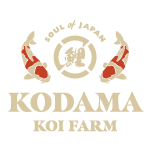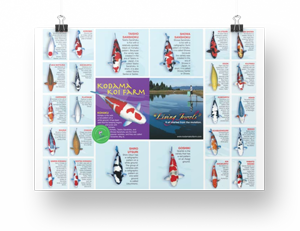This article by Richard Rubinstein was originally featured in the Michigan Koi Club (MKPC) newsletter and gives an attendee’s perspective on the Aloha Koi show 2018. Learn about his experiences and favorite parts of this unique show that had events spanning from Thursday to Sunday February 18th, 2018. Richard, thank you for your kind words and support of the hobby!
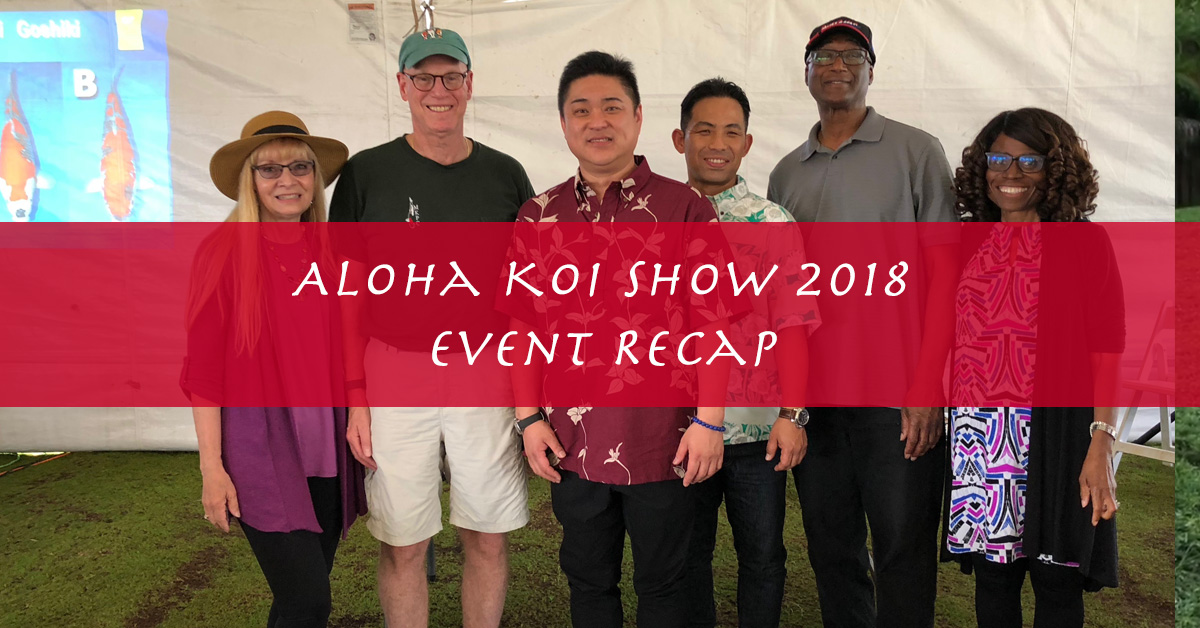
Beth, Richard, Mr. Mano, Mr. Omosako, Irvin, and Antoinette
The 11th Annual AKAS Aloha Koi Show was recently held on Saturday-Sunday February 17-18 at the Waikiki Aquarium in Oahu, Hawaii. Those attending from the MKPC were Antoinette and Irvin Daniels and Beth and Richard Rubinstein. The show actually began on Thursday, February, 15 at a special VIP event for out of town guests, which was held at the Kodama Koi Farm in Mililani just outside of Honolulu.
Taro Kodama gave us a tour of the farm and showed us some very special Koi. His father Mamoru Kodama introduced his new book, Kokugyo Vol. 3, which is a continuation of Kokugyo Vol. 1 and Vol. 2 and serves as a guide to help us decide what to look for when we are buying or judging the quality of Koi. The book is visually stunning and is a must for the serious Koi keeper. Mr. Kodama personally signed the book for those who purchased it.
Taro also gave an in-depth presentation on the recent KHV outbreak at the farm and how it was addressed. He was very forthcoming and answered all our questions. He explained how it was discovered and showed us slides of the fish kill, and how the farm personnel worked with local veterinarians and state agricultural officials to eliminate the problem. In addition to the fish kill, gill clippings of representative Koi in all tanks were taken and examined by authorized personnel. He also showed us the new protocols they recently introduced to decrease the chance of further outbreaks.
As of this time, the farm is free of KHV and business is back to normal. Taro and his brother Hide did an incredible job of tackling the problem head on and solving it.
On to the Koi show. This was not your typical Koi show. Even though the recent outbreak of KHV was resolved, Taro wanted to be extra cautious and decided not to handle exhibitors Koi with his own. Instead, he created a two-day program of seminars and judging events. In addition to several display tanks that held a variety of beautiful Koi from the farm, there were an additional 14 tanks where you could judge the quality of the Koi. Each tank contained anywhere from 3 to 5 Koi of the same species. Tosai were judged against tosai and adults were judged against adults.
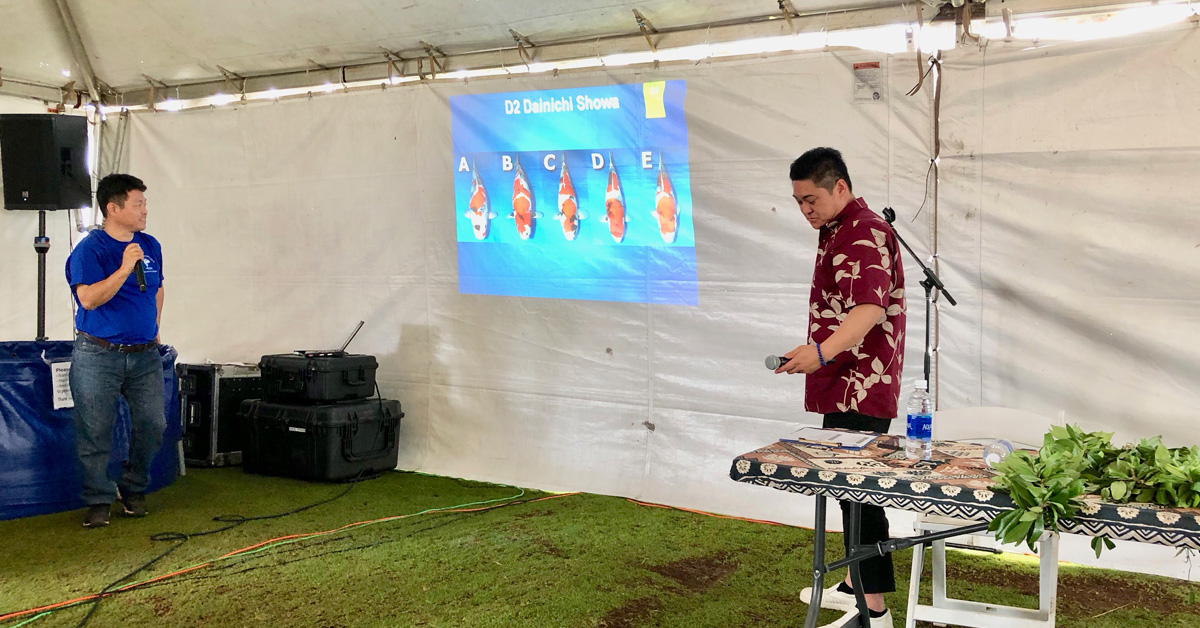
Taro Kodama and Mr. Mano explain how to judge the Dainichi Showa variety
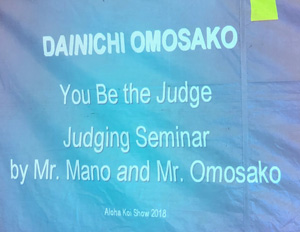
You be the Judge Seminar with Mr. Mano and Mr. Omosako
All attendees were given entry forms and were asked to rank the Koi in each tank. The varieties were Sanke, Kohaku, Showa, and Utsuri, which are all varieties of koi for sale from Kodama Koi Farm. There was a total of 50 Koi, so this was quite a task. After the “judging” was over, Mr. Shigeru Mano from Dainichi Koi Farm and Mr. Takayoshi Omosako from Omosako Koi Farm, who had judged the Koi the previous day, reviewed their personal choices during a projected slide presentation. Prizes were awarded for those who scored the best. Truth be known, I did not do very well. Antoinette beat me handily and won several prizes.
In addition to the judging, there were several projected and live seminars during the two days. Topics were Koi husbandry, understanding Koi varieties, and the history of Koi.
One presentation I found very interesting was given by Taro and his brother Hide. They explained and then demonstrated how you handle very large Koi. They demonstrated how to use a net to coax the Koi into a large plastic bag and then how to safely lift the bag and release the Koi into a large show bowl. Then they showed how to pick up the Koi using your bare hands and physically place it back into the tank. I had never seen this before in person, only on YouTube. Hide handled the Koi like it was a newborn baby. In my opinion, this was the most interesting seminar.
A bountiful banquet was held Saturday night at the Sheraton Waikiki and about 25 people attended. The food featured Hawaiian specialties, seafood, chicken, beef, sushi, and a variety of local desserts which were limitless and incredible. Both Mr. Mano and Mr. Omosako answered more questions from the group and distributed gifts that they had brought from Japan.
As I said earlier, this was an unusual Koi show as there was no head to head competition and as a result there were no bruised or hurt feelings from those who didn’t win a trophy. However, there was so much opportunity to learn about Koi that the program did not lack in any way, shape or form. Kudos to the Kodama Koi farm. We had a great time and plan on returning next year.
